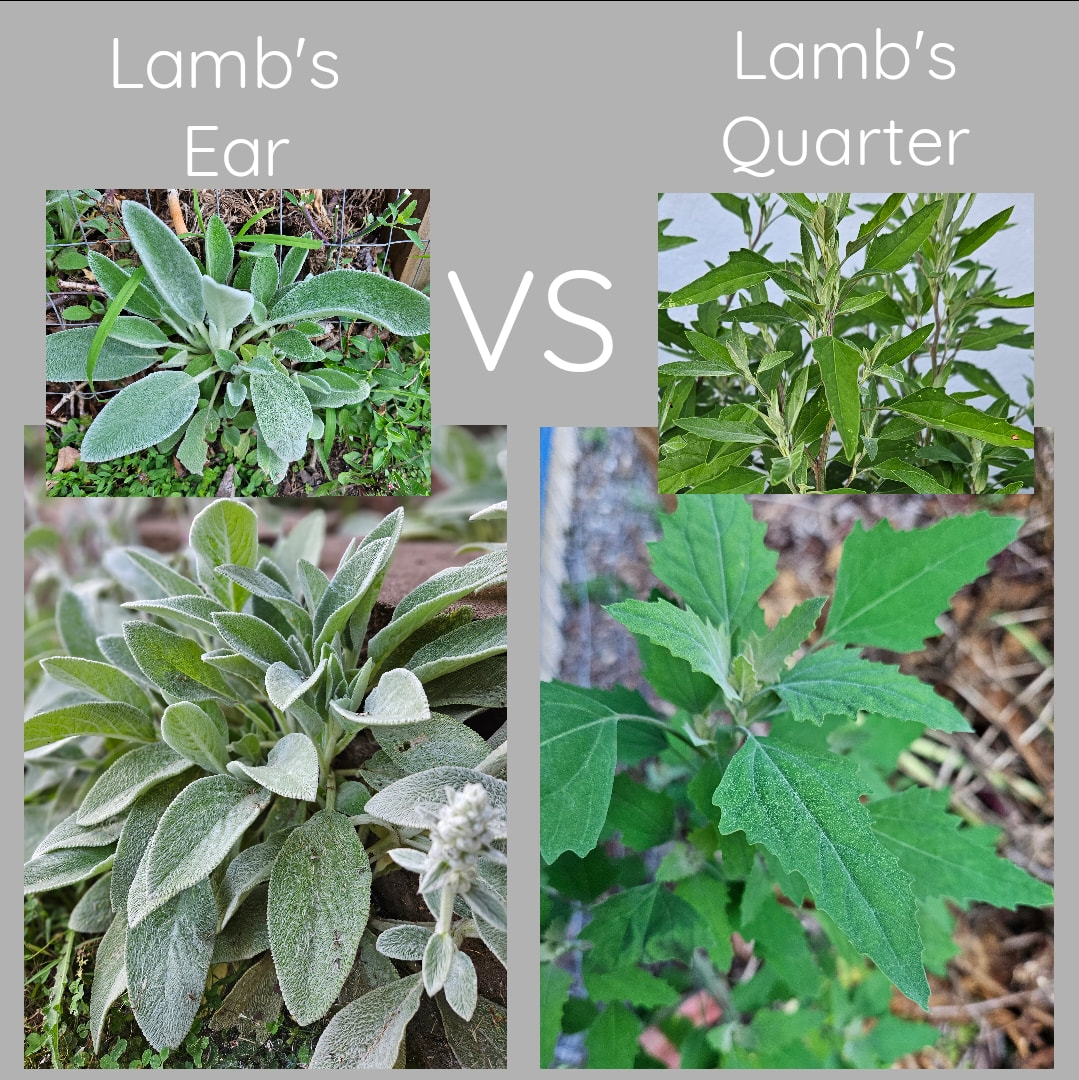|
I know I’ve been blessed with a teachable moment when I tell someone of the incredible nutritional value of lamb’s quarters and they immediately say, “The fuzzy light green plant?” My response is usually, “No, that’s the pretty plant, lamb’s ear, you see in landscaping, flower, and pollinator gardens. Lamb’s quarter is considered an invasive weed by many who are looking to have a manicured, weed-free lawn. Though one is considered a desirable garden plant and the other an obnoxious weed, both have nutritional and medicinal benefits. Lamb’s ear has an added benefit when there’s a panic-run on toilet paper. You guessed it. Those fuzzy soft leaves are great for wiping. Even better if you have hemorrhoids. In fact, lamb’s ear was widely used during the Civil War to dress and treat wounds due to its powerful astringent and antiseptic properties. Lamb’s ear is antibacterial and anti-inflammatory. You can make a bandage out of the soft fuzzy leaves. Just pick and apply to knuckle scrapes and cuts received while working in the garden. They can also be applied to larger bleeding wounds. Hold it on for short-term relief or use something like Co-Flex self-adhesive wrap for longer applications. Whatever you have around to attach it securely, but not tight enough to cut off circulation. It’s like applying a bandage with Neosporin. If you get an insect sting, wad up a leaf in your hand and crush it a little to release the juices, then unwad and apply to the sting. Lamb’s ear has many uses as an oil, ointment, tea, tincture, or poultice. The best way to preserve it for use throughout the winter is to dry the leaves. Many know of the medical benefits of lamb’s ear. Not as many that its leaves can be eaten as a young green sliced and added to a salad. The leaves can also be cooked like any other greens or fried in a batter like fish. Haven’t tried it, but the battered leaves sound appetizing. Let’s get back to the lamb’s quarter which started this discussion. Like I said earlier, many consider it an invasive weed. After planting some in the garden next to my house I totally understand this now. Wow! It took over that area of the garden. So much so that a neighbor friend mentioned to another friend how she wanted to pull the weeds out of my gardens while I was away. (We are currently double nesting in Texas and the Appalachian Mountains.) Luckily the other friend knew there were highly valued weeds in my gardens and said I might not appreciate that. Very sweet gesture, but I’m thankful for the intervention to save the lamb’s quarter. I had been working on getting it to grow in a large container to control its spread when I spotted bags of harvested lamb’s quarter leaves for sale at the local farmers market as the valued nutritional green that it is. Maybe my invasive weed has just turned into a new cash crop. Lamb’s quarter does have medical uses for gastrointestinal tract disorders like diarrhea, stomachache, internal inflammation, and loss of appetite. Some also use it as a poultice to alleviate achy or swollen joints. After boiling dried leaves for tea or a poultice, the water can be used like mouthwash for toothaches. Use caution with the seeds as they contain a soap-like substance called Saponin. It’s okay to consume in small amounts. Lamb’s quarter is best known for being loaded with nutrients . . .full of vitamin A and C. High in fiber and containing manganese, calcium, copper, traces of iron, and lots of omega-3 and omega-6 fatty acids. The leaves, flowers, stems, and seeds can all be used raw or cooked. Sautee it with onions and garlic as a great side dish and substitute for spinach, especially if you are looking for a slightly milder flavor than spinach. I enjoy making a salad out of this and dandelion greens growing in my yard. Both have mild flavors and go well together. I just go out and pick what I need, saving money on the expensive salad greens in my fridge that usually rot and end up in the compost bin. Lamb’s quarter is a part of the Amaranth Family like beets, chard, quinoa, and spinach. If you have a sensitive stomach, you might want to cook it first to reduce the oxalic acid that could cause stomach discomfort. Lamb’s quarters can be preserved in a variety of ways. You can freeze, dry, or even make it into a pesto. If you have large quantities growing in your yard like I do, it can be canned in a pressure canner like you would any other greens. I would love to hear about any recipe you would like to share using either of these plants. Until next time, God bless and happy gardening. Important Disclaimer: This content is informational only and not prescriptive. When dealing with health issues, be sure to do your own research and consult with the appropriate health professional for guidance. These statements have not been evaluated by the FDA. It is information based on my personal research and studies.
0 Comments
Leave a Reply. |
A Mattingly
Artist, Writer, Holistic Living Guide Important Disclaimer: Any content discussing medicinal uses of plants, herbs, or food as medicine is informational only and not prescriptive. When dealing with health issues, be sure to do your own research and consult with the appropriate health professional for guidance. These statements have not been evaluated by the FDA. It is information based on my personal research and studies.
Categories
All
Archives
September 2023
|


 RSS Feed
RSS Feed